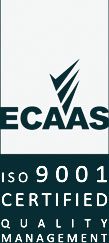There are important changes to the National Cervical Screening Program clinical guidelines when a woman has an intermediate risk result.
Australian Government Chief Medical Officer Professor Paul Kelly has written a letter to healthcare providers explaining:
Revised clinical guidelines recommend a second follow-up HPV test for women at intermediate risk instead of referral for colposcopy at the time of their 12-month follow-up intermediate risk result.
The revised guidelines, introduced in February 2021, confirm it is safe for patients with a 12-month follow-up HPV (not 16/18) result and negative liquid-based cytology (LBC), or possible low-grade squamous intraepithelial lesion (pLSIL) or LSIL (intermediate risk result), to have a second follow-up HPV test in a further 12 months after their first follow-up HPV test, instead of referral to colposcopy.
Exclusion criteria for patients at intermediate risk at their 12-month follow-up test after an intermediate risk cervical screening test result
For women who may be at higher risk of a high-grade abnormality, a referral for colposcopy is recommended if HPV (any type) is detected at the first 12-month follow-up HPV test, regardless of the result of reflex LBC.
This includes:
• women who are 2 or more years overdue for screening at the time of the initial cervical screening test
• women who identify as Aboriginal and/or Torres Strait Islander
• women aged 50 years or older.
Patients who meet the abovementioned exclusion criteria should be referred for colposcopic evaluation at the time of their 12-month follow up intermediate risk result. Please discuss with your patient their individual circumstances and how this may impact them.
Patient details and their history can be updated via the Healthcare Provider Portal. See our Primary Care Impact page for information and instructions on accessing the National Cancer Screening Register via the Healthcare Provider Portal. Alternatively, please contact the register on 1800 627 701.
Read the letter from Prof Kelly (PDF, 26 Oct 2021).



